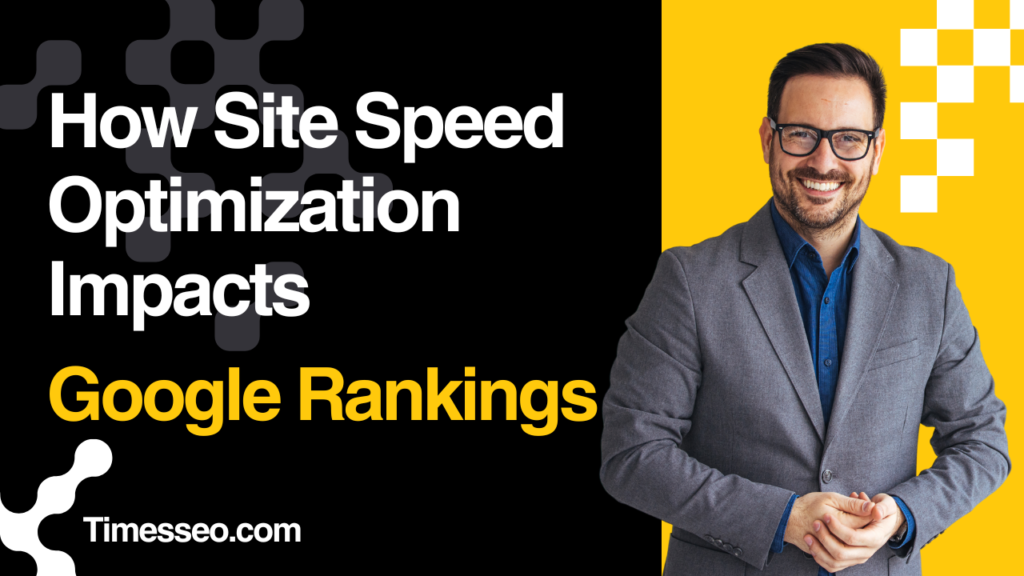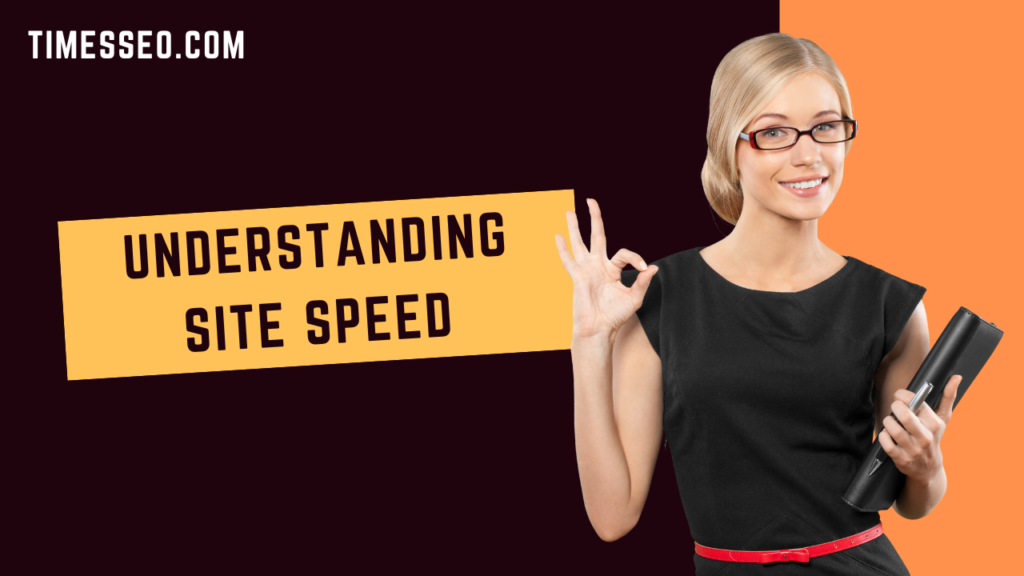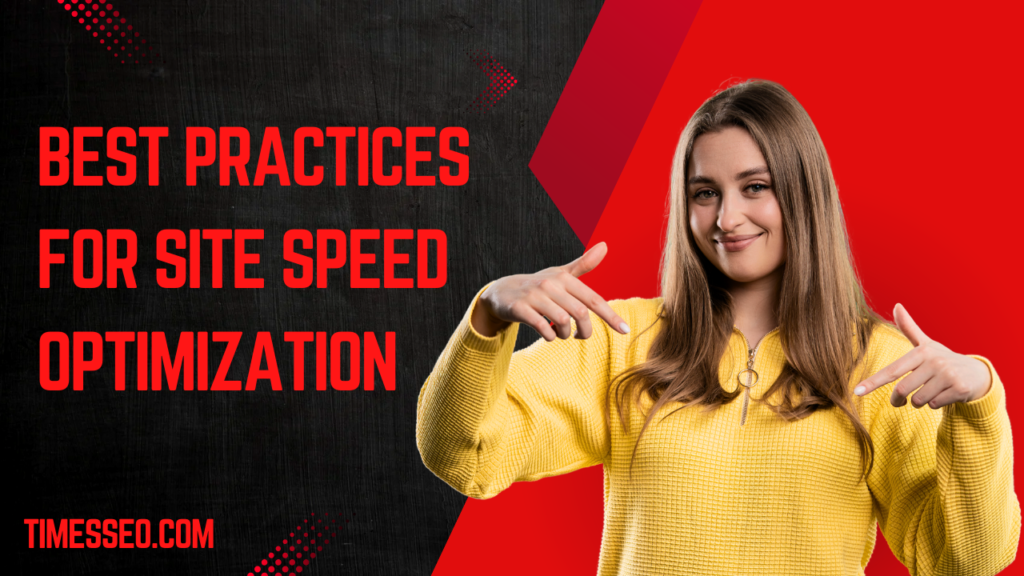
How Site Speed Optimization Impacts Google Rankings
Discover how site speed optimization plays a critical role in boosting your Google rankings. This blog post explores the relationship between enhanced SEO performance, faster load times, and better user experiences. Learn practical tips, tools, and best practices to speed up your website and stay ahead in search results.
Table of Contents
Introduction
Ever clicked on a link and waited…and waited…until you finally gave up and bounced? You’re not alone—and Google notices when this happens on your site.
Welcome to the world of site speed optimization, where milliseconds matter and performance plays a starring role in your search engine ranking. Let’s break down why faster is better—not just for users, but for your position on Google too.
Understanding Site Speed
What Is Page Speed?
Page speed refers to how quickly your content loads when someone clicks on your site. It’s typically measured in seconds—or ideally, milliseconds.
Page Speed vs. Site Speed
- Page Speed = Individual page load time
- Poor hosting: Using shared servers can lead to slower website performance.
Google often evaluates both, but site-wide speed consistency matters more than just one lightning-fast homepage.
Key Metrics You Should Know
LCP (Largest Contentful Paint) – Time it takes for the main content to load.
FID (First Input Delay) – Time before a user can interact with your site.
CLS (Cumulative Layout Shift) – Visual stability; how much content jumps around while loading.
These are collectively known as Core Web Vitals—Google’s golden standard for page performance.
How Google Measures Site Speed
Core Web Vitals & Page Experience
Since Google’s 2021 Page Experience update, speed is no longer a “nice-to-have”—it’s essential. Core Web Vitals became official ranking signals, giving sites with strong performance a competitive edge.
Mobile-First Indexing
Google primarily uses its mobile version to index and rank your content. So if your desktop flies but your mobile crawls? Bad news.
The Connection Between Site Speed and Rankings
Faster Sites = Higher Rankings
A slow-loading site frustrates users—and Google. Sites that load quickly generally rank higher, especially when all other SEO elements are equal.
User Experience is a Ranking Factor
Think of Google as a matchmaker. It wants to connect users with the best possible experience. If your site is sluggish, that experience suffers—and so does your ranking.
Bounce Rate & Time on Site
Speed affects both:
- Higher speed = lower bounce rate
- Lower bounce rate = more time on site
- More time on site = Google likes you more
Simple math.
Site Speed and User Behavior
Conversion Rates Go Up with Speed
Amazon famously reported that every 100ms delay cost them 1% in sales. That’s a massive impact.
Faster = Trustworthy
Users often equate speed with reliability. If your site loads like a champ, users are more likely to:
- Browse longer
- Trust your brand
- Make a purchase
Real-Life Examples
Pinterest cut wait times by 40% and increased sign-ups by 15%.
According to the BBC, they lost 10% of their users for each extra second their website took to load.
Factors That Slow Down Your Site
Unoptimized images: Huge file sizes kill load speed.
Bloated JavaScript: More scripts = more delays.
Bad hosting: Your speed may drop if you use shared servers.
No caching: Re-downloading every element every time? That’s a no-no.
How to Test Your Site Speed
- Google PageSpeed Insights – Direct insights + improvement suggestions.
- GTmetrix – Detailed waterfall charts of load events.
- Lighthouse (Chrome DevTools) – Advanced performance audit tool.
Best Practices for Site Speed Optimization
1. Image Compression
Use formats like WebP and tools like TinyPNG or ShortPixel to reduce size without losing quality.
2. Minify CSS/JS/HTML
Cut out the fluff. Every unnecessary line of code adds milliseconds.
3. Browser Caching
Let visitors reuse elements they’ve already downloaded.
4. Lazy Loading
Only load what users see. Wait for videos or images to load until they scroll down.
5. Use a CDN
A Content Delivery Network stores your files on multiple servers worldwide so users always connect to the closest one.
Mobile Site Speed Matters Even More
- Most users come from mobile.
- Mobile networks are often slower.
- Google’s index is mobile-first.
Use AMP for blazing speed or go with responsive design + lightweight themes.
Tools and Plugins for Speed Optimization
- WordPress: WP Rocket, Autoptimize, W3 Total Cache
- Shopify: TinyIMG, Booster
- Wix: Built-in performance tools
- CDNs: Cloudflare, StackPath, BunnyCDN
Technical SEO and Speed
- Crawl Budget: Slow sites can exhaust crawl limits.
- Hosting: VPS or dedicated servers outperform shared ones.
- Redirect Chains: Clean them up for faster response.
E-Commerce and Speed
- Cart abandonment = profit loss. Speed it up.
- Optimize product photos and cut down on scripts on product pages.
- Checkout should be fast, simple, frictionless.
Maintain Speed Long-Term
- Set up monthly performance audits.
- Use tools like Pingdom Alerts or UptimeRobot.
- Stay updated with new web standards.
Myths About Site Speed and SEO
“Speed Alone Will Rank You”
Nope. It helps, but content, backlinks, and on-page SEO still rule.
“AMP Is Mandatory”
Helpful, but not essential—good optimization does the trick.
“Flashy Sites Are Always Slow”
Not true. Smart design + lazy loading = good looks and great speed.
Conclusion
Your website speed isn’t just a technical detail—it’s the first impression you make on users and Google. With speed now being a confirmed ranking factor, optimizing it is no longer optional.
So whether you’re a blogger, e-commerce owner, or digital agency, site speed optimization should be at the top of your SEO checklist.
Frequently Asked Questions
A score above 90 on Google PageSpeed Insights is ideal. Load time under 2.5 seconds is recommended.
Yes, slow sites can rank lower, increase bounce rates, and lose traffic over time.
At least once a month, or after every major update or plugin/theme change.
Start with image compression and caching—it gives instant results.
Not directly, but they reward fast ones, so in effect, yes—your slow site can drop in rankings.
Table of Contents
Popular Posts
-
 Affordable Technical SEO Audit for Small Business: A Complete Guide26 Jun 2025 Blog
Affordable Technical SEO Audit for Small Business: A Complete Guide26 Jun 2025 Blog -
 How to Get an Affordable Technical SEO Audit for Small Business27 Jun 2025 Blog
How to Get an Affordable Technical SEO Audit for Small Business27 Jun 2025 Blog -
 The Ultimate Local SEO Audit Checklist for Startups28 Jun 2025 Blog
The Ultimate Local SEO Audit Checklist for Startups28 Jun 2025 Blog -
 Local SEO Audit Checklist for Startups: A Beginner’s Guide28 Jun 2025 Blog
Local SEO Audit Checklist for Startups: A Beginner’s Guide28 Jun 2025 Blog -
 Top On-Page SEO Audit Steps for Service Websites Every Business Should Know29 Jun 2025 Blog
Top On-Page SEO Audit Steps for Service Websites Every Business Should Know29 Jun 2025 Blog -
 Technical SEO for WordPress: The Ultimate Beginner’s Guide01 Jul 2025 Blog
Technical SEO for WordPress: The Ultimate Beginner’s Guide01 Jul 2025 Blog -
 The Impact of On-Page SEO Audit Steps for Service Websites on UX01 Jul 2025 Blog
The Impact of On-Page SEO Audit Steps for Service Websites on UX01 Jul 2025 Blog -
 Technical Mobile SEO Audit Tips for Developers02 Jul 2025 Blog
Technical Mobile SEO Audit Tips for Developers02 Jul 2025 Blog -
 Complete SEO Backlink Audit Guide for Better Google Rankings03 Jul 2025 Blog
Complete SEO Backlink Audit Guide for Better Google Rankings03 Jul 2025 Blog -
 Boost Your Rankings with Technical SEO for WordPress01 Jul 2025 Blog
Boost Your Rankings with Technical SEO for WordPress01 Jul 2025 Blog






